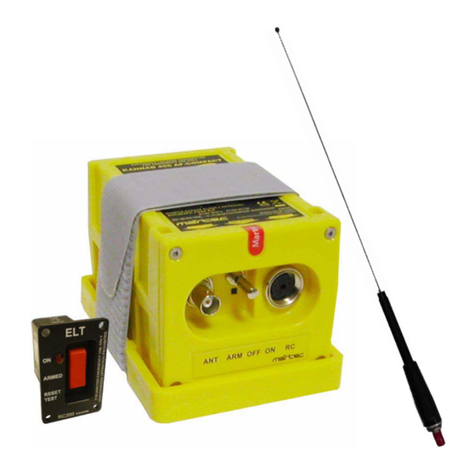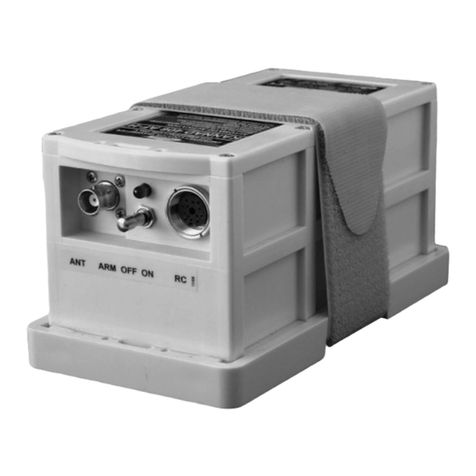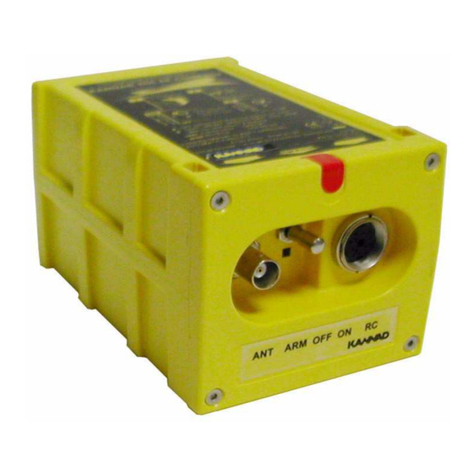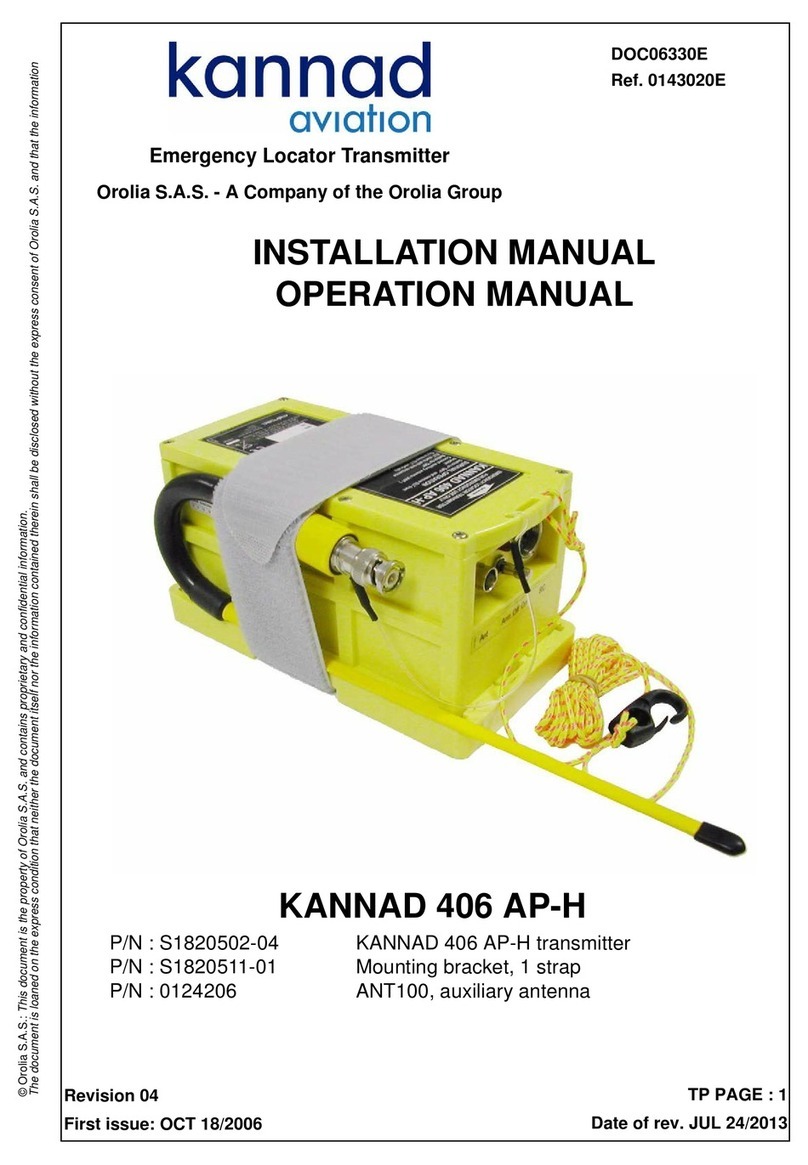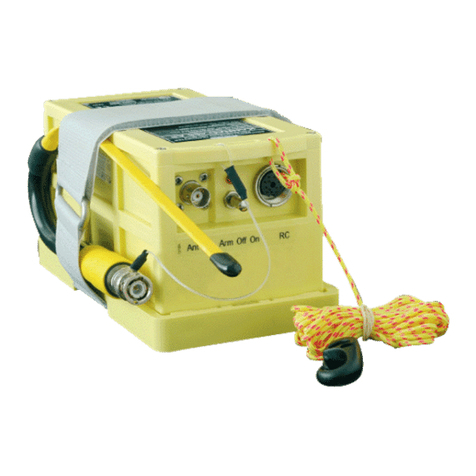INITIAL INSTALLATION MANUAL
AF INTEGRA / AF-H INTEGRA
TABLE OF CONTENTS
TOC PAGE: 1
JUN 01/2011
Introduction ........................................................................................... 1
KANNAD INTEGRA System Presentation ............................................ 1
System overview ...................................................................................................1
Transmitter and bracket .........................................................................................2
Remote Control Panels (RCP) ...............................................................................3
RC100 KIT ..........................................................................................................3
RC102 KIT ..........................................................................................................4
RC200 .................................................................................................................4
RC300 / RC300 NVG ..........................................................................................5
RC600 NVG ........................................................................................................5
External antennas ..................................................................................................6
Registration ........................................................................................... 7
General ..................................................................................................................7
Registration in USA ...............................................................................................7
Registration in Canada ..........................................................................................8
ELT Installation ..................................................................................... 9
ELT and bracket installation recommendations .....................................................9
FAA Recommendations ......................................................................................9
TSO C126a Section 5 b. Application Data Requirements ...................................9
RTCA DO-182 Recommandations ......................................................................9
RTCA DO-204a Requirements ...........................................................................9
ELT location recommendations ........................................................................... 10
Bracket installation procedure .............................................................................10
Determine location and direction .......................................................................10
Fix the mounting bracket ...................................................................................12
ELT installation procedure ...................................................................................13
Antenna Installation ............................................................................. 15
Antenna Installation Recommendations .............................................................. 15
FAA Recommendations ....................................................................................15
RTCA DO-204 Recommendations for external antenna location ..................... 15
External Antenna Location ................................................................................15
Antenna installation procedure ............................................................................16
RCP installation ................................................................................... 18
RCP Installation Recommendations .................................................................... 18
RCP Installation Procedure .................................................................................18
RC100 ...............................................................................................................19
RC102 ...............................................................................................................21
RC200 ...............................................................................................................24
RC300 / RC300-NVG ........................................................................................26
RC600 NVG ......................................................................................................27
Outside Buzzer Installation ................................................................. 28
ELT Connection .................................................................................. 29
First power up procedure .................................................................... 29
ELT operational tests ...........................................................................................29
RCP operational tests ..........................................................................................30
406 and 121.5 MHz transmission test .................................................................31
406 MHz ............................................................................................................31
